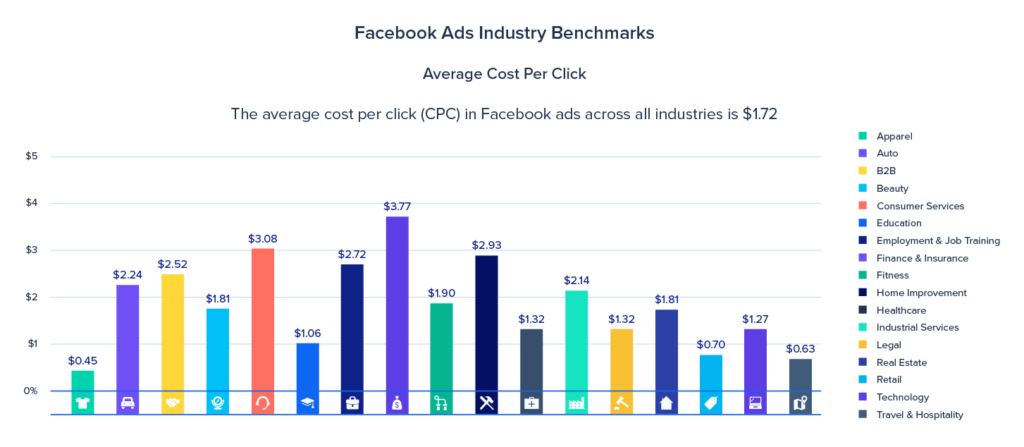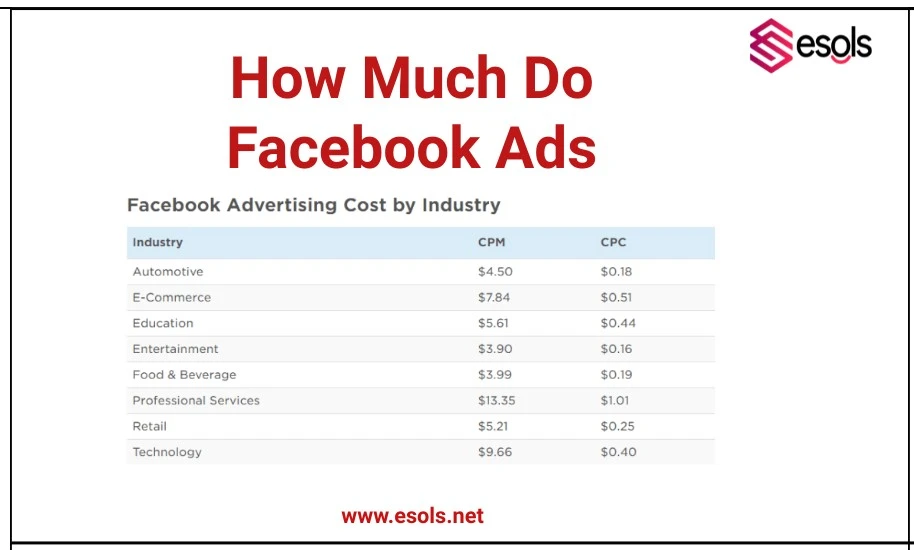In March 2018, it was assumed that Facebook would be no longer effective for the audience. Mark Zuckerberg himself claimed that much has changed since then. However, it was the beginning of a new era for social media marketing.
These days, Facebook remains a lucrative platform for the business to run ads and earn huge ROI. In 2021, Facebook registered $114 billion in ad revenue. You may wonder how much do a Facebook ad costs right?
This article will explain everything you need to know about How Much Do Facebook Ads Cost
Table of contents
Understanding the Facebook Auction System
Above we have explained some basic ad costs to run a Facebook ad. Numerous factors impact on the ad spent such as
· Your bid strategy
· Total budget
· Targeted audience
· Industry
· Ad Quality
· Ad Purpose
Apart from the above, marketers must know about how Facebook auction system works. We often see numerous ads on Facebook, these appear due to a bidding process called ad auction. The process starts when a marketer places a bid for a particular audience.
In other cases, multiple advertisers place bids to ensure their ad displays above all. When Facebook weighs an ad over the others it considers two factors such as ad quality and its target audience.
Ad with the highest bid remains on top in the target audience news. However, there is another way through which you can get your advertisement on top by paying a lower ad amount. It requires you to post an ad that is relevant to your audience. Facebook rewards some ads with top ranking that help users to find a solution.

Cost of Facebook Advertising
Digital marketing agencies strive to grab more audiences and boost their sales figures. Therefore, they rely on paid advertising and use social media platforms like Facebook. However, what is the cost of an ad, and how to spend less in 2024?
Here is an average Facebook ad cost that digital marketing agencies spend
- $0.26 – $0.30 per click
- $1.01 – $3.00 per 1000 impressions
- $0.00 – $0.25 per like
- $0.00 – $5.00 per download
However, there is something more you should know for a better understanding
How Facebook Ads Cost?
Facebook charges advertisers after considering various metrics. These include
1. Cost per Click (CPC)
2. Cost Per Mile (CPM)
3. Cost Per Lead (CPL)
CPC refers to the cost of every click your ad is receiving. CPM is the cost per 1000 impressions your ad is getting. Cost Per lead is the amount for every lead you have generated through a particular ad.
Marketers should know that an ad campaign with a huge budget remains profitable. It has access to a wider reach and brings more traffic to your website, increasing the chances of sales.
Facebook Ads CPC
The average cost per click of Facebook ads is around $1. However, other factors directly influence this amount. Therefore, marketers must expect to pay almost $0.94.
In other words
If you’re selling a product that costs $50 and your conversion rate is 2.5 – 3% (average for eCommerce, for example), you’ll need to generate 33 – 40 clicks to get one sale.
With an average cost per click of $1, you may require a budget of $33- it means $17 will be your profit. In case your product costs less than $33 you need to reconsider your advertising strategy to ensure CPC remains under $1.

Facebook Ads CPM
If you are paying your ad costs as per the impressions, you must know the average amount is about $14. If you are running an ad to reach more than 5000 people with an average CPM of $14 you should have a budget of $7000.

Facebook Ads CPL
The cost per Lead for the Facebook ad remains around $5. However, you must know that all leads do not result in sales. Therefore, consider the average lead conversion rate when placing your ads on Facebook.
Read Complete Guide For History of Internet
Top Factors Determining Your Facebook Ads Costs
Above we have learned about the cost of Facebook ads and their types. Knowing about factors determining your Facebook ad cost is also important for the marketers,
| Factor | Explanation |
| Target Audience | The more specific your target audience, the higher the cost. This is because targeting a niche market often involves more competition for ad placements. Broad audiences can reduce costs but may lower engagement. |
| Ad Placement | The placement of your ads impacts cost. Ads shown in the News Feed generally cost more than those in the right column. Choosing automatic placement can optimize costs across various placements. |
| Ad Quality and Relevance | Facebook rates ads on quality and relevance. Higher scores can lead to lower costs because Facebook prioritizes user experience. Crafting engaging, relevant ads boosts your score and reduces costs. |
| Bidding Strategy | The bidding strategy you select affects your ad costs. Manual bidding gives you control but can be more expensive if not optimized. Automatic bidding adjusts based on competition, often reducing costs. |
| Ad Objective | Different ad objectives, such as conversions, traffic, or brand awareness, come with varying costs. Objectives with direct actions like conversions typically cost more due to their higher value to businesses. |
| Seasonality and Timing | Costs fluctuate with demand during different times of the year. For example, the holiday season sees higher ad costs due to increased competition. Planning campaigns during less competitive times can lower costs. |
How to Run Facebook Ads?
Running Facebook ads effectively involves three key steps. First, set clear objectives for your campaign, such as increasing brand awareness, driving website traffic, or boosting sales. Define your target audience based on demographics, interests, and behaviors. Utilize Facebook’s Audience Insights to refine your audience.
Next, create compelling ad content. Design eye-catching visuals and write engaging copy that resonates with your audience. Choose the appropriate ad format, such as image, video, carousel, or slideshow, depending on your goals and the message you want to convey.
Finally, monitor and optimize your ads. Use Facebook’s Ads Manager to track the performance of your campaign. Analyze metrics like click-through rate (CTR), conversion rate, and return on ad spend (ROAS). Adjust your targeting, ad creatives, and budget based on the data to improve results.
Conclusion
Understanding the factors that influence Facebook ad costs and how to manage them effectively is key to maximizing your marketing budget. By considering ad objectives, target audience, placement, and quality, you can better predict and control your ad spend. Utilize the strategies discussed to optimize your campaigns and achieve your business goals efficiently.
Readmore: History of Digital Marketing
FAQ’s Related Facebook Ads Cost
A good starting budget varies by business size, but many start with $5 to $10 per day.
Improve ad relevance, narrow your target audience, and use high-quality visuals and copy to lower costs.
The average CPC on Facebook ranges from $0.20 to $2.00, depending on industry and targeting.
Facebook bills you based on your selected bidding strategy, charging per click, impression, action, or like.
Yes, Facebook ads can be run on small budgets, and you can start with as little as $1 per day.

Smith
Welcome to my blog! As an SEO expert with over 15 years of experience, I’ve witnessed the transformative power of search engine optimization from the very beginning of my career. In this blog series, I’ll delve into the crucial role SEO plays in the success of small businesses. Join me on this journey to uncover how leveraging data-driven insights and innovative SEO techniques can propel your small business to new heights, attract a broader audience, and drive sustainable growth in the digital age. Whether you’re a seasoned entrepreneur or just starting out, you’ll find valuable insights and practical tips to enhance your SEO strategies.


